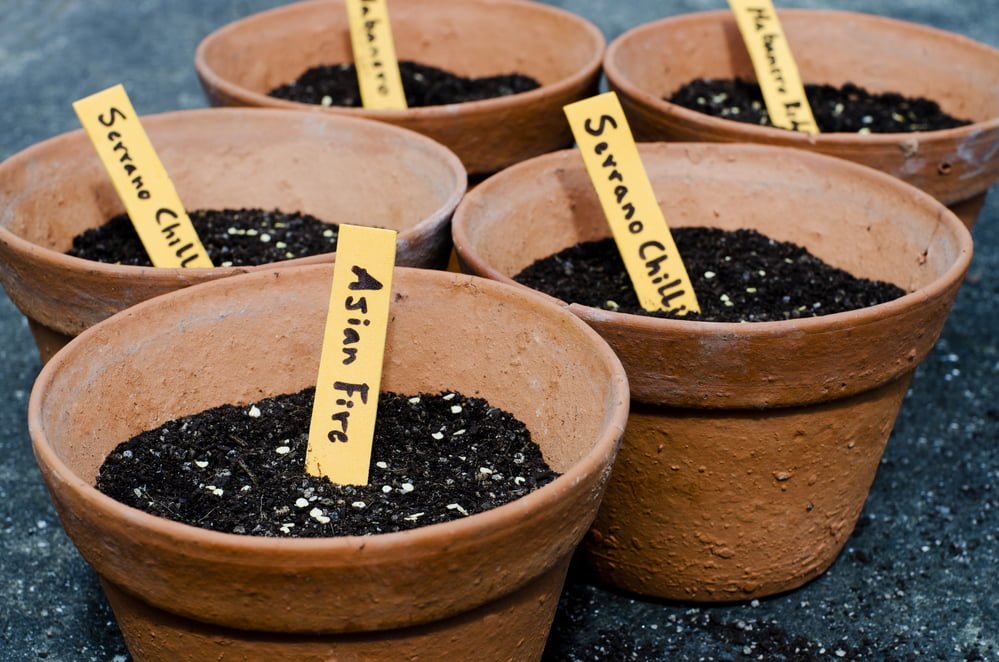
Winter is a perfect time to try your hand at container gardening! And what better way to spice up those dreary winter nights than with fresh peppers and picante chilies?
Read on to learn more about how to start and maintain a chili pepper container garden!
So Many Varieties
Sweet and spicy peppers and chilies are one of the easiest plant species to grow in a container — you’ll be growing big, beautiful peppers before you know it.
Some popular varieties you may want to try include:
- Chinese ornamental
- Red rocoto
- Chiltepin
- Orchid
- Chinese five color
- Pimenta biquinho
- Mini chocolate bell
- Trinidad perfume
- Purple beauty
Mind you, these are not your standard, garden-variety peppers, so you may need to look around a bit for them in greenhouses and nurseries that grow these varieties. Or, of course, you can select your own favorites to add to your wintertime garden!
Be sure to choose the more compact types or those specifically designed for growing in containers. Hot peppers are great to for containers because they won’t get too tall or need any additional support.
Getting Started
Consider these two very important ingredients for successfully growing your peppers:
- Light: Your pepper garden will need five or more hours of direct sun each day. The more light you can provide for them, the better they will do for you.
- Water: Your pepper plants will depend on you for all their water, so place your containers in an easy-access location that you won’t forget about.
The Recipe for Planting
The type of soil you choose for your container planting is very important. Choose a rich, organic potting soil specifically labeled for pots and container gardening. Other mixes may have too much peat moss in them, which will compress during the growth process and won’t provide enough room for the roots to grow. Consequently, your plants won’t develop properly or hold enough water to thrive and bear fruit.
You also may wish to select a soil that comes with the fertilizer already incorporated. Pepper plants will survive without regular feedings, but their growth may be slow and the yield may be sparse.
You also can use a time-released fertilizer to feed your plant. Just follow the directions on the fertilizer for container size.
The Right Watering Formula
As we mentioned before, your pepper plant will be completely dependent on you for water. Water your spicy progeny frequently, at least once a day if the temperature is above 65 degrees (twice a day if you move it outside during the summer and the temp is above 80 degrees).
Remember that your home is drier during the winter, so take care not to let your plants dry out between waterings.
Reap What You’ve Sown and Enjoy!
Once your peppers begin to grow, harvest them just as soon as they ripen. This will allow the plant to use its energy to grow even more peppers. Do make sure you leave them on the plant until they are fully colored, however, for the best flavor.
If you have more than you can use, your home-grown peppers and chilies make great gifts, or you can preserve them for future use!
Millcreek Gardens is Salt Lake City’s premier locally owned and operated plant nursery, garden center and greenhouse. Stop in today for all the supplies you need to get your spicy container garden growing this winter.


